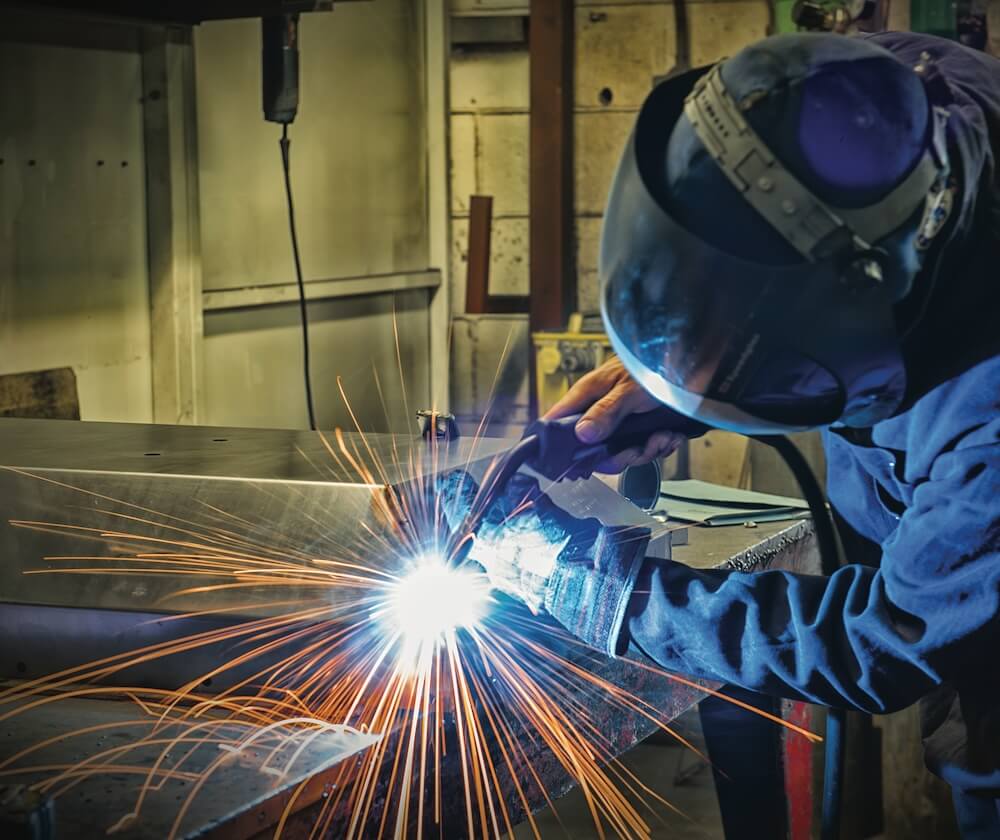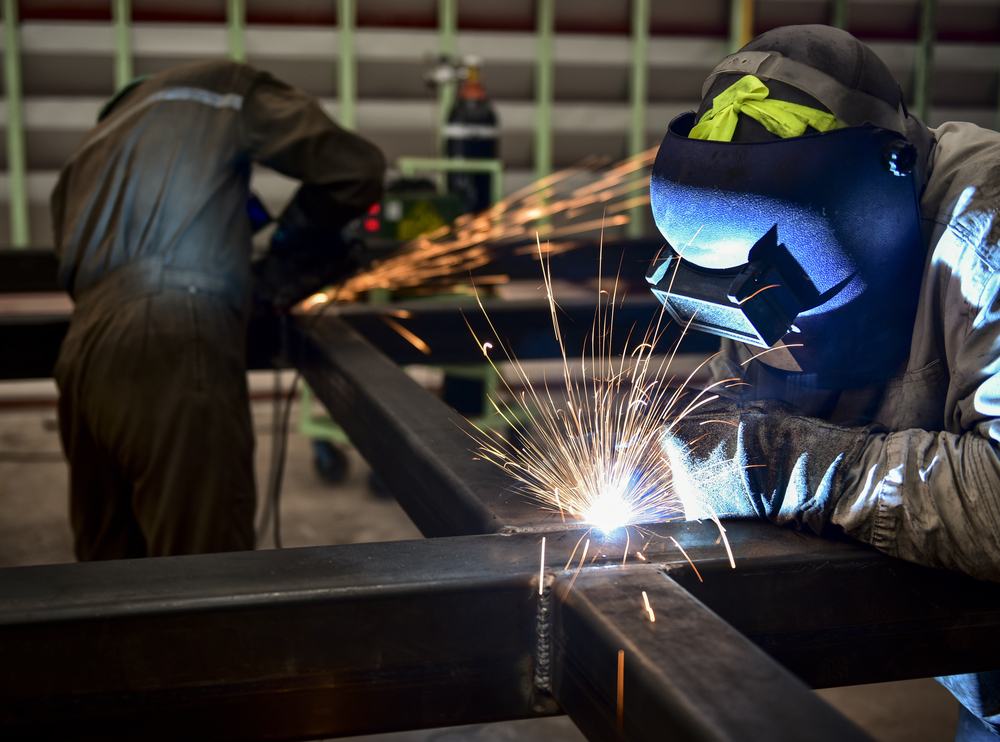Everything about Welding: Secret Insights Into Techniques and Finest Practices for Success
Welding incorporates a range of techniques, each suited for specific materials and applications. Comprehending these techniques, such as GMAW, SMAW, and TIG, is essential for accomplishing ideal results. The right tools and safety and security practices can not be neglected. As prep work and fixing play crucial duties in the welding procedure, grasping these aspects can greatly enhance the top quality of the end product. What are the essential factors that guarantee an effective weld?
Comprehending Different Welding Strategies
Welding strategies include a selection of techniques, each matched to details applications and products. Among the most typical techniques are Gas Metal Arc Welding (GMAW), Protected Metal Arc Welding (SMAW), and Tungsten Inert Gas Welding (TIG) GMAW, likewise called MIG welding, is popular for its rate and adaptability, making it suitable for thin materials. SMAW, or stick welding, is preferred for its simplicity and performance in outside settings, specifically with thicker steels. TIG welding supplies precision and control, making it ideal for intricate job and non-ferrous metals (Montana Mobile Welding and Repair Belgrade Fabrication). Each method has its special benefits and considerations, permitting welders to pick the ideal method based upon the project's needs, product kind, and preferred end results. Recognizing these strategies is crucial for effective welding
Important Welding Devices and Tools
While different welding techniques require certain abilities, the right tools and devices are similarly important for achieving quality results. Essential welding equipment includes welding equipments, which vary depending on the technique-- such as MIG, TIG, or stick welding. Safety gear, including aprons, headgears, and handwear covers, assurances security and convenience throughout the procedure. In enhancement, clamps and fixtures aid secure materials in position, ensuring precision in welds. Consumables like welding rods, cable, and shielding gas are also vital components that influence the high quality of the weld. In addition, devices such as mills and cutters assist in surface prep work and post-weld completing, adding to an expert end result. Investing in top notch tools eventually boosts the effectiveness and performance of welding projects.
Safety Practices in Welding
Correct safety and security practices are crucial in the welding sector to protect workers from possible dangers. Welders should wear suitable individual protective tools (PPE), including helmets with appropriate shading, handwear covers, and flame-resistant clothing. Ample air flow is crucial to decrease exposure to harmful fumes and gases generated during the welding procedure. In addition, workers need to be trained in the appropriate handling of welding devices to stop mishaps. Fire precaution, such as maintaining flammable products far from the welding location and having fire extinguishers easily available, are essential. Routine examinations of devices and work spaces can assist identify possible hazards before they lead to crashes. By sticking to these security methods, welders can develop a more secure working environment and lessen threats connected with their profession.
Preparing Products for Welding
Preparing products for welding is an essential step that substantially affects the quality and integrity of the final product (Montana Mobile Welding and Repair Belgrade Fabrication). Proper preparation involves cleaning up the surfaces to get rid of contaminants such as corrosion, dust, and oil, which can jeopardize the weld. Methods such as grinding, fining sand, or using solvents are commonly used to attain a tidy surface area. Additionally, making certain that the materials fit together comfortably is crucial; gaps can lead to weak welds. It's also essential to take into account the positioning and positioning of the parts, as this will impact the simplicity of welding and the final end result. Selecting the suitable filler product and making sure compatibility with the base metals is crucial for accomplishing solid, sturdy welds.
Tips for Getting High-Quality Welds
Attaining premium welds calls for focus to detail and adherence to ideal methods throughout the welding process. Appropriate joint preparation is important, ensuring surface areas are complimentary and clean from contaminants. Picking the suitable filler product and welding strategy based on the base metals is important for suitable bonding. Keeping consistent travel rate and angle while welding can promote and prevent flaws uniformity. Additionally, regulating warmth input is important; too much heat can lead to warping and weakened joints. If needed, consistently examining the welds during the process permits for instant changes. Employing ideal post-weld therapies, such as cleaning and tension relief, can boost the sturdiness and integrity of the weld, inevitably making certain a successful end result.
Fixing Common Welding Issues
Welding usually offers difficulties that can affect the top quality and honesty of the final product. Common issues such as porosity, inconsistent weld beads, and overheating can arise, each calling for certain troubleshooting techniques. Comprehending these issues is vital for welders to boost their abilities and achieve excellent outcomes.
Porosity Problems Clarified
Porosity can often be forgotten, it remains an important concern in welding that can compromise the integrity of a finished product. Porosity refers to the visibility of small gas pockets within the weld grain, which can weaken the joint and lead to early failing. This trouble normally occurs from contaminants, dampness, or incorrect protecting gas coverage throughout the welding process. To alleviate porosity, welders need to validate that the base products are tidy and completely dry, make use of ideal protecting gases, and maintain consistent welding criteria. On a regular basis checking the equipment and atmosphere can also assist recognize possible concerns prior to they materialize in the weld. Dealing with porosity properly is necessary for accomplishing solid, long lasting welds that meet top quality criteria.

Irregular Weld Beads
Irregular weld beads can considerably impact the quality and strength of a completed product. Various have a peek at this site variables add to this concern, including improper traveling speed, incorrect amperage settings, and irregular electrode angles. When the welder relocates as well rapidly, a bead might appear slim and lack infiltration, while moving as well slowly can trigger too much build-up. Additionally, making use of the incorrect amperage can result in either damaging or extreme spatter, both of which concession weld honesty. The welder's strategy, such as inconsistent torch movement, can also cause irregular bead appearance. To alleviate these issues, welders must concentrate on keeping constant, regulated motions and ensuring correct tools settings to attain uniformity in their welds. Uniformity is vital to accomplishing trustworthy and strong welds.
Getting Too Hot and Warping Issues
Extreme heat during the welding process can result in considerable getting too hot and buckling concerns, impacting the architectural stability of the workpiece. These issues usually manifest as distortion, which can jeopardize alignment and fit-up, making further setting up testing. Aspects adding to overheating include the choice of welding criteria, such as voltage and travel rate, as well as the kind of material being welded. To reduce these problems, welders must keep consistent traveling rate and suitable warmth input while keeping an eye on the workpiece temperature. In addition, preheating or post-weld warm treatment can aid minimize stress and anxieties brought on by fast air conditioning - Belgrade Fabrication. Routine inspection and adherence to best practices are crucial in protecting against overheating and making sure the longevity and integrity of welded structures
Regularly Asked Inquiries
What Are the Occupation Opportunities in the Welding Sector?
The welding sector supplies diverse job opportunities, consisting of settings as welders, engineers, instructors, and examiners. Experts can work in production, construction, aerospace, and automobile markets, taking advantage of strong demand and competitive salaries in numerous duties.
Exactly How Can I Boost My Welding Speed Without Giving Up Top Quality?
To improve welding speed without sacrificing high quality, one must exercise reliable methods, preserve devices, maximize setups, and boost hand-eye sychronisation. Routine training and looking for feedback my response can additionally greatly contribute to accomplishing faster, top notch welds.
What Accreditations Are Readily Available for Welders?
Various certifications exist for welders, including those from the American Welding Society (AWS), the National Center for Construction Education And Learning and Research Study (NCCER), and numerous industry-specific companies. These credentials enhance employability and demonstrate ability efficiency.
Exactly How Does Welding Affect the Properties of Metals?
Welding affects the residential properties of metals by modifying their microstructure, which can bring about adjustments in ductility, solidity, and toughness. Heat input and air conditioning prices throughout the procedure substantially influence these product qualities.
Can I Weld Dissimilar Metals With Each Other?
